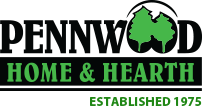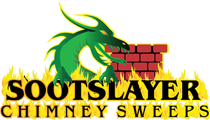Chimney Cleaning
58,900 REASONS TO HAVE YOUR CHIMNEY SERVICED
The U.S. Consumer Product Safety Commission, reports that some 58,900 residential fires in the 50 states were related to solid fuel appliances and equipment in 2009. As a result of these fires, 480 people died, 1,520 people were injured, and total property losses were set at more than $1.1 billion. In addition there were a minimum of 119 deaths from carbon monoxide and at least 4,700 “injuries” reported for the same time frame, though most estimates range much higher.
The root cause of most of these losses is that most U.S. homeowners are unaware that chimneys are an integral part of a home heating system and that they require regular evaluation and maintenance. In a great many European countries – including Sweden, Norway, Denmark, Finland and Germany – chimney-fire damage statistics have been reduced to negligible numbers because national coalitions of government, insurance companies, fire and building officials, and chimney sweeps have developed tough regulations mandating regularly scheduled chimney inspections and cleaning. The citizens of those countries understand the hazards of unmaintained chimneys, and their chimney sweeps are regular members of their home safety team.
Most homeowners in the U.S. and Canada, however, seem to have little working knowledge of chimney and venting systems. This situation is complicated by the fact that faults, damage and problems rarely visible to the casual observer. In fact, people who will quickly replace a faulty automobile exhaust system because of the hazard it presents will allow their home’s exhaust system the chimney or vent – to go unchecked and unmaintained for years. The threat of chimney fires and unsafe indoor air quality conditions can be greatly reduced, perhaps even eliminated, if homeowners only understood that chimneys are active home operation systems which require regular maintenance.
The Chimney Sweeps Role
The primary job of Sootslayer Chimney Sweeps, your chimney service professional, is to aid in the prevention of fires related to fireplaces, woodstoves, gas, oil and coal heating systems and the chimneys that serve them. Wood burning heating systems, in particular, require careful monitoring and our skillful operation.
Sootslayer installs, cleans and maintains these systems, evaluate their performance, prescribe changes to improve their performance, and educate the consumer about their safe and efficient operation. The basic task of a chimney sweep is to clean chimneys. Cleaning means removing the hazard of accumulated and highly combustible creosote produced by burning wood and wood products. It means eliminating the build-up of soot in coal-and-oil-fired systems, it means getting rid of bird and animal nests, leaves and other debris that may create a hazard by blocking the flow of emissions from a home heating appliance. In doing their primary job, sweeps also function as on-the-job fire prevention specialists. We are constantly on the lookout for unsafe conditions that can cause home fires or threaten residents with dangerous or unhealthy indoor air quality.
Sootslayer keeps abreast of the current developments and the technology of our trade. We are knowledgeable about the most recent National Fire Protection Association standards as well as the specifics of state and local codes covering your geographic area.
How often should a Chimney be cleaned?
The National Fire Protection Association (NFPA) recommends that your chimney is inspected at least once a year and cleaned as necessary. Inspecting your chimney is the only way to determine the amount of glaze(shiny, tarry substance, excess of 1/8 inchor more is not safe and needs to be removed),soot or creosote (need to be removed when the amount approaches or exceeds1/4 inch).The rate of creosote buildup is affected by:
- Residence time (the amount of time that smoke remains in the vent system). You can reduce that time by making sure that you have the right flue (not oversized)
- Smoke density(usually results from restricted combustion air).
- Internal Chimney Temperature (depends on size and location of the chimney). The warmer the chimney, the less the creosote can stick to it. Oversize chimneys tend not to warm up completely and can lead to more creosote buildup.
 814•359•2761
814•359•2761

